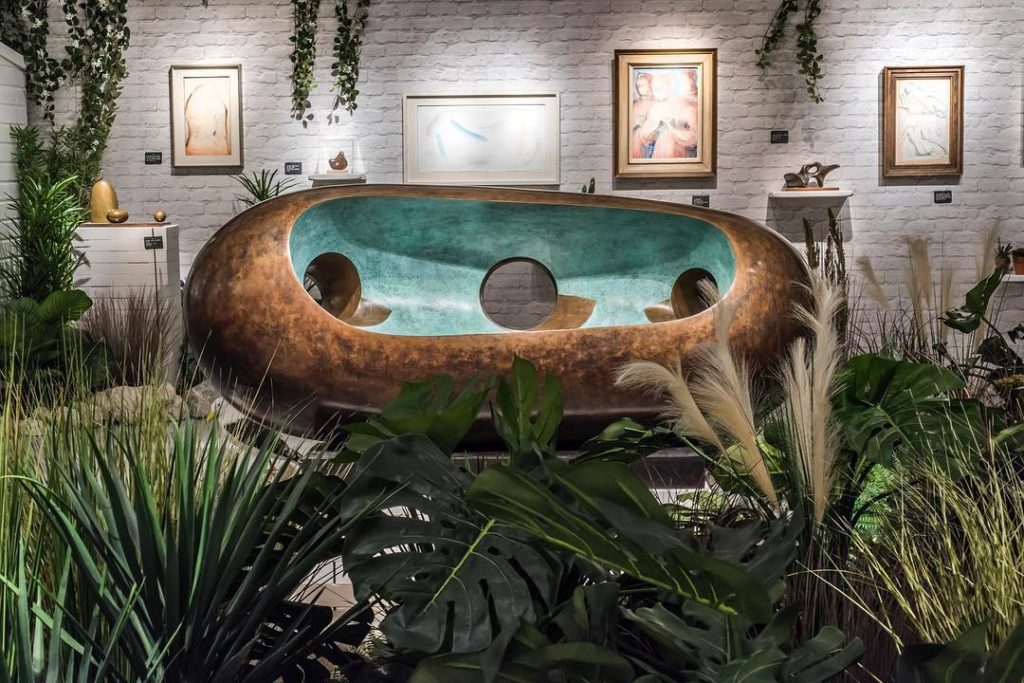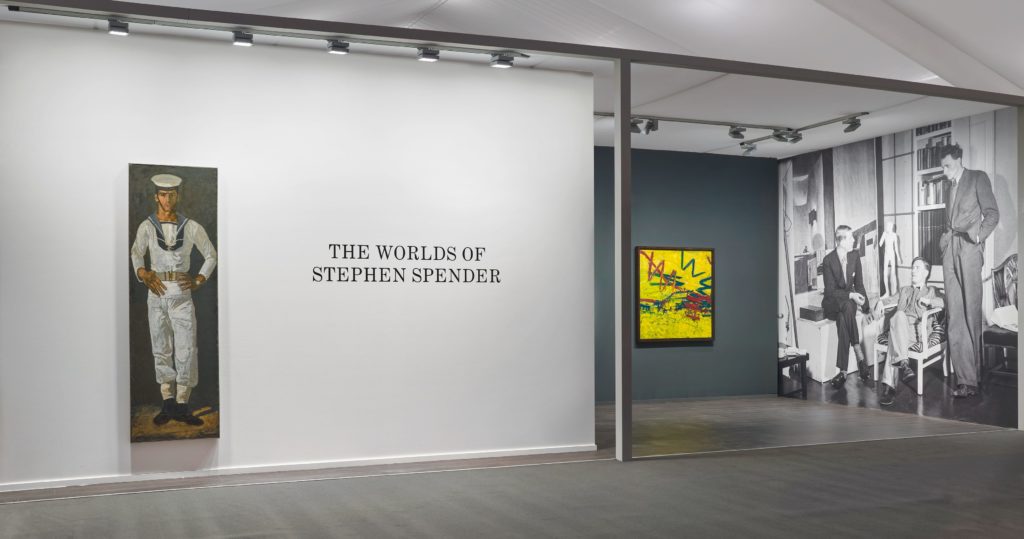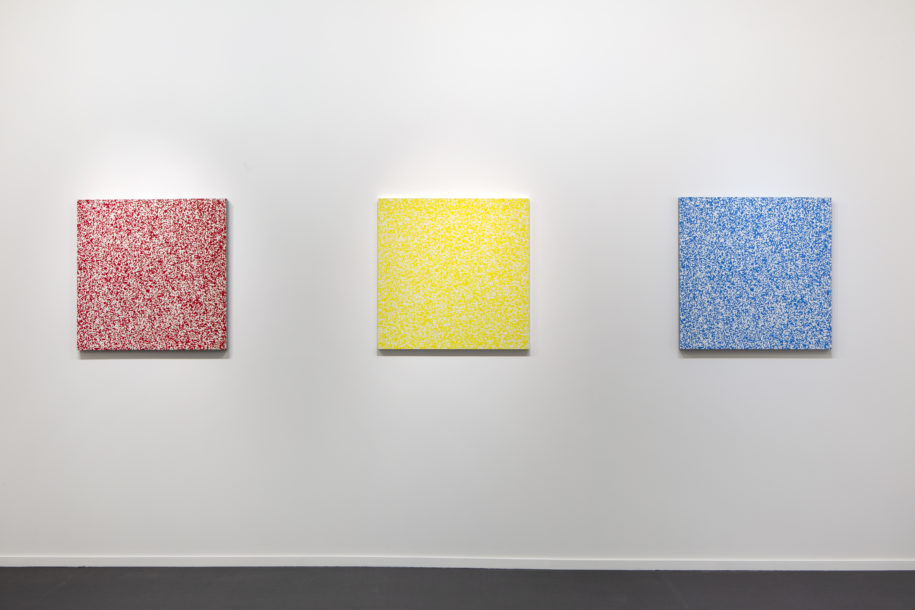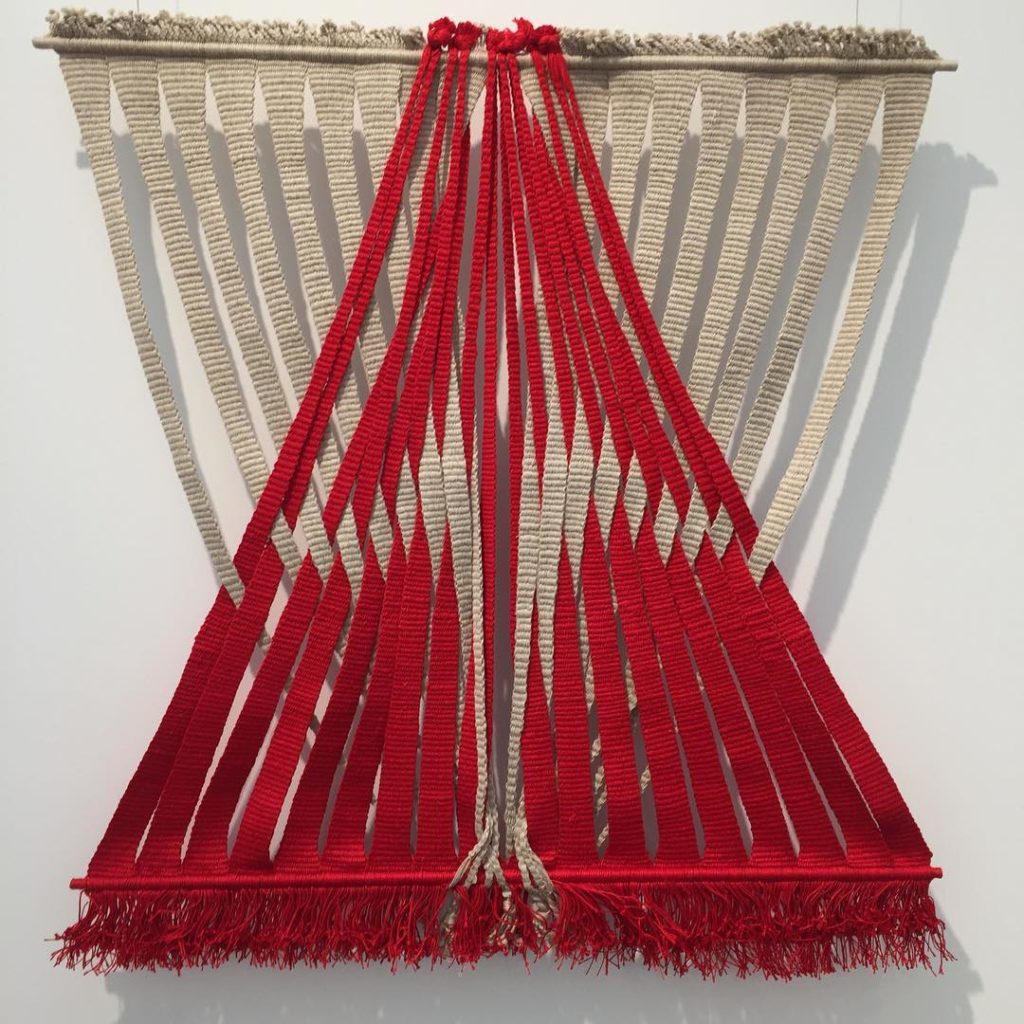Art Fairs
Frieze Masters Opens With Moderate Sales and an Opportunity for Dealers to ‘Play’
The London fair opens to VIPs in Regent's Park today.

The London fair opens to VIPs in Regent's Park today.

Julia Halperin

Art fairs have been getting a bad rap lately. They’re too expensive. They’re ruining the art-viewing experience. They keep people from going to galleries. They reward uniformity.
It seems, however, that someone forgot to tell all of this to Frieze Masters, the tony sister of Frieze London dedicated to art from before 2000, which opened to VIPs on Wednesday. Dealers here largely abandon the greatest-hits strategy that can make art fairs feel like anonymous, expensive strip malls. Instead, they use their stands to show off their curatorial ingenuity, collaborative spirit, and intellectual verve.
Often, the results are extremely impractical. Take the London gallery Dickinson, which had to reinforce the floors of its booth to accommodate four tons of rocks and a half-ton bronze sculpture by Barbara Hepworth. The work, River Form, was the centerpiece of the booth and sold by the end of a preview. The rocks, on the other hand, were merely for decoration. Coupled with a garden’s worth of fake plants, they helped transform the booth into an approximation of Hepworth’s studio in St. Ives. “Four months of work went into a four-day exhibition,” sighed the gallery’s Max Weaver.
Pace, meanwhile, recruited American artist Adam Pendleton, who is the subject of a solo exhibition at its space in Burlington Gardens, to curate its Frieze Masters booth with an eclectic mix of art riffing on the concept of the grid. Discussions about the project began a year and a half ago, according to the gallery’s Ben Strauss-Malcolm, and the artist was given “free rein in our database.”
Dealers would be hard-pressed to find a higher-wattage crowd than the one under this tent: Collector Dasha Zhukova, actress Keira Knightley, dealer Philippe Ségalot, and former Stedelijk Museum director Beatrix Ruf were all spotted strolling the aisles. But at Frieze Masters, gallerists seem to show off as much for one another as for clients.

Installation view, Hauser & Wirth at Frieze Masters 2018, courtesy of the artists / estates and Hauser & Wirth. Photo: Alex Delfanne.
“It’s one of the few fairs that can allow us as dealers to play a bit more,” says Flavio Gianassi of Moretti Fine Art, which teamed up with Hauser & Wirth to present an homage to the British poet Stephen Spender. The stand juxtaposes medieval art he loved, like two 14th-century panels by Bortolomeo Bulgarini priced at €1 million, with works by 20th-century artists with whom he was friends, including Frank Auerbach and Arshile Gorky.
Notably, a growing number of dealers banded together to present joint stands this year. (The tactic allows dealers to put their best foot forward while keeping overhead low at a time when the market is not exactly frothy.)
In addition to Hauser & Wirth and Moretti, the Paris- and London-based gallery kamel mennour and New York- and London-based Lévy Gorvy collaborated for the first time to present a solo booth dedicated to French conceptual painter François Morellet. The gallery sold four works for prices ranging from €250,000 and €350,000 to American and European private collectors as well as a neon installation—the artist’s first-ever work in the medium—from 1963 to a European institution for €1 million.

Installation view, Lévy Gorvy in collaboration with kamel mennour: François Morellet. © ADAGP François Morellet. Photo: Julie Joubert. Courtesy Studio Morellet; Lévy Gorvy, New York/London; kamel mennour, Paris/London.
Most of the early sales reported during the Frieze Masters preview, however, were for pieces under $1 million. Among those that went quickly were works by the fiber art pioneer Lenore Tawney, whose estate Alison Jacques Gallery recently began to represent. Within the first few hours of the fair, the gallery secured buyers for four drawings on graph paper ($65,000–85,000) and one so-called “drawing in air” (a 3D composition made with string priced between $65,000 and $120,000).
The fair marks the first time a significant selection of Tawney’s work has been on the primary market since her death in 2007, Jacques notes—and interest is building quickly. “Museums who have seen her work compartmentalized as design are waking up,” Jacques tells artnet News, citing recent acquisitions by Tate in London and the Whitney Museum of American Art in New York.

Leonore Tawney at Alison Jacques, Frieze Masters. Photo courtesy of Frieze.
Meanwhile, London’s Robilant + Voena sold a plaster bust of Napoleon’s younger sister Caroline Bonaparte by Canova with an asking price of €890,000 and an 18th-century painting by Tiepolo listed at €600,000. Among other early sales was a painting by Korean artist Lee Ufan for $155,000 at Pace and a stately sculpture of a seated lion from the mid-2nd century for £65,000 at Sam Fogg.
Big-ticket sales were, perhaps unsurprisingly, a bit slower to come in. Exceptions included a work by Franz Kline, which was listed at $8 million and sold at Van de Weghe, and a rare imperial book of hours, which sold at Jörn Günther Rare Books for around €3 million ($3.4 million).
Other memorable objects on offer—still available by the afternoon—include a wall-engulfing painting of Cleopatra from 1639–1640 by Artemisia Gentileschi at G. Sarti priced at €2.8 million ($3.2 million). The dealer bought the work for a song several years ago and through research only recently attributed it to the Baroque painter.
Tornabuoni Art touted an imposing white embroidery work by Arte Povera founder Alighiero Boetti—”the biggest work in the rarest series,” according to the gallery’s Ermanno Rivetti—priced at €5 million. And Olivier Malingue Gallery presented an unnerving painting of a nude woman and child by Surrealist Paul Delvaux priced at $10 million (just a hair under the artist’s auction record of $10.6 million).

A bust by Canova in front of a work by Enrico Castellani at Robilant + Voena’s stand at Frieze Masters. Photo: Julia Halperin
Some dealers note that the fair’s prominent place in the calendar—coinciding with the marquee fall Modern and contemporary auctions in London—can be a curse as much as a blessing. “There is so much supply during this week with the auctions, but not the same level of demand as in New York,” one dealer says. “People wait to see how things do at the auctions and then try to lowball you on the Sunday.”
While some dealers admit (anonymously, at least) that Frieze Masters does not usually account for a large chunk of their bottom line, they say it provides a valuable enough marketing tool and good enough contacts to keep them coming back.
“This is a long-term fair,” dealer Nick Maclean says.